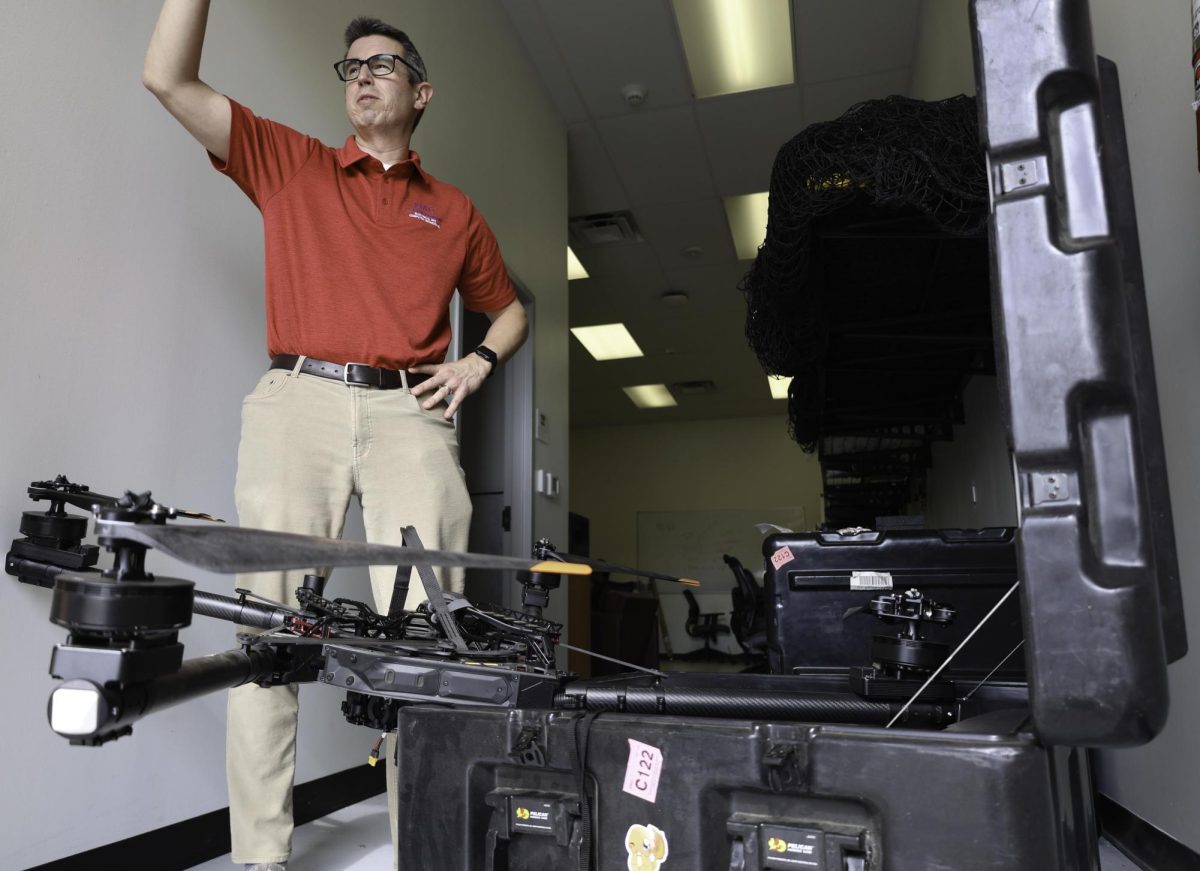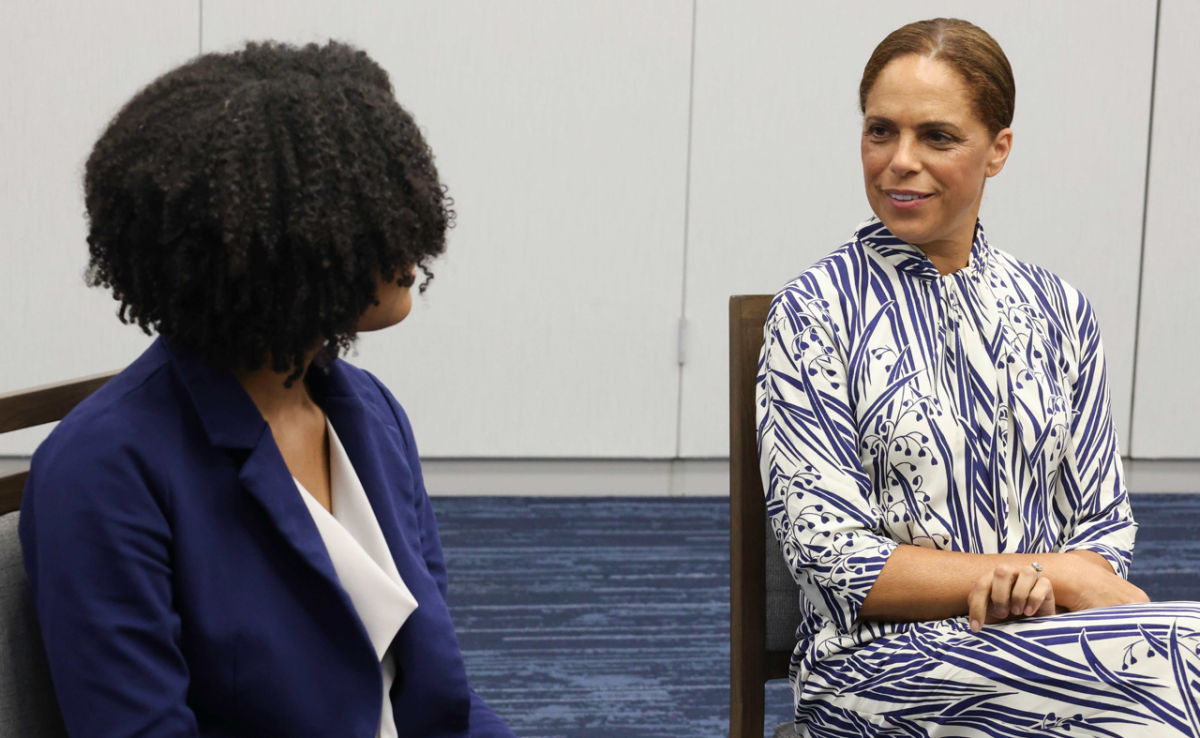The Meadows Museum at Southern Methodist University (SMU) is home to an extensive permanent collection of Spanish Art. From Goya to Picasso, the galleries are filled with master art works that tell a story extending far beyond the confines of a canvas.
Two of those pieces, each depicting a venerated patron saint of Seville by Spanish artist Bartolome Esteban Murillo, have been at the forefront of a recently concluded investigation into claims that the paintings had been stolen by the Nazis from the Rothschild family, a prominent family in the banking business, during World War II.

In 2006 and 2007, Robert Edsel, director of the Monuments Men Foundation for the Preservation of Art, was working in archives in Munich, preparing material for his first book, Rescuing da Vinci, when he came across two archival photographs that included images of these two paintings.

The photograph of Saint Justa is seen in the Nazi restoration studio at Buxheim where the painting was found by Monuments Man James Rorimer, while the other of Saint Rufina was depicted in the Central Collecting Point that the Monuments Men established in Munich, following World War II.
These photographs prompted Edsel to call into question the provenance of these works of art he knew to be in the Meadows Museum. There was no indication in the museum records, or at the time of purchase that there were any discrepancies.
“The Murillos were clearly visible in each respective photo,” Edsel explained in an email. “In checking the Meadows provenance on each painting, it was obvious that either their provenance was wrong as there was no mention of any Nazi past, or the two paintings in the photographs were copies.”

Meadows Museum curator Nicole Atzbach came to SMU in 2010 and began researching the claims made by Edsel.
“Robert Edsel found these two wartime photos of these paintings before I came here in 2008, and he wanted to know why the paintings were in Germany.” Atzbach said.

The paintings, one of Saint Justa and the other of Saint Rufina, were purchased by the Meadows Foundation in 1972 at auction. At the time of purchase, SMU and Meadows Museum did not know the works had been stolen, officials said.
The works are currently on tour at the Hospital de los Vernerables (Hospital of the Venerable Priest) in Seville, Spain in celebration of the 25th anniversary of the Fundacion de Cultura de Sevilla (FOCUS) and the Murillo Year.
The Monuments Men Foundation did research on the provenance of both paintings. The Monuments Men Foundation was founded to gather information and raise public awareness of 350 or so men and women from thirteen nations, many of whom were museum directors, curators, and educators, who protected monuments and other cultural treasures from the destruction of World War II, according to their website.
“At the end of our effort, we constructed the correct provenance of the two paintings and proved (to our satisfaction) their Nazi past beyond any question,” wrote Edsel.
The Monuments Men Foundation was able to locate the ERR Nazi inventory cards, which confirmed that both paintings had been confiscated from the Rothschild family.
The ERR number, which stands for Einsatzstab Reichsleiter Rosenberg, is a code used by the Nazis to catalog stolen works. The number on the backs of the pieces matched that found on the index card, confirming the works as previously stolen.
“One of the paintings had a clearly legible marking, R-1171, corresponding to the Nazi inventory for works stolen from the Rothschilds; the other was more faint, but after using infrared photography we could clearly see that it showed R-1170,” Edsel wrote.
According to Atzbach, at the time that claims were made, no one at the museum knew about this, nor had these pieces undergone extensive provenance work. Until recently, scholars, dealers and former curators had thought that these paintings had previously been in the Sutherland collection in London, a private collection of works owned by the Dukes of Sutherland.
“Essentially what happened was that the provenance had been confused and we had our facts wrong,” Atzbach said.
Atzbach took things a step further when she was able to link the works to the Rothschilds, because of the letter ‘R’ that preceded the numbers on the back. An early provenance error complicated the efforts in finding the original owner.
“It is my assumption that the code on the back of each painting was ‘R’ and that stood for the Rothschild family,” Atzbach said. “So if these paintings were stolen from the French branch of the Rothschild family, how could they have been in England, it didn’t really line up.”

After many dead ends, Atzbach happened upon a misplaced Rothschild folder in the L’s at the Archive Center of the Ministry of Foreign and European Affairs, which held information about a Rothschild named Antoinette Leonino. A post-it note attached to the front of the file read ‘Madame Leonino equals Rothschild.’ This lonely file was the missing piece of the puzzle that led to the investigation’s conclusion.
Through her research into Leonino, Atzbach learned that she was an art collector. The paintings of Saint Justa and Saint Rufina were returned to her by the allies after the war, which she survived.
Thanks to the work of Atzbach, the Museum was able to prove that the paintings had been lawfully restituted to the Rothschild family after the war and before the sale in 1972. The paintings are apart of the permenant collection in the museum.

SMU Visiting Assistant Professor of Art History Dr. Danielle Joyner is familiar with the art in the museum and understands the value of provenance research.
“I think that it is an unfortunate fact of a lot of really fantastic works of art in museums today, but the fact that it has been discovered and that their proper provenance has been uncovered is great,” Joyner said.
According to SMU Assistant Professor of Art History Stephanie Langin-Hooper, it is important to look at the motivations behind looting works of art, which raises concerns of ethical dilemmas through provenance research. Langin-Hooper specializes in the history of looted ancient art and artifacts. Like Atzbach, Langin-Hooper played a role in the discovery of looted antiquities in her private research.
“The motivation behind looting art is largely financial, but can also be used to demonstrate power over another group,” Langin-Hooper said.
Langin-Hooper said that most people are very much aware that art stolen during wartime does have human rights implications.
“This is about your right to celebrate your own culture, a right to have identity, history, and personal belongings,” Langin-Hooper said. “Having that taken away from you does deny some basic human rights.
Most museums devote time to provenance research of their works of art. The Dallas Museum of Art, for instance, has dedicated time and money into research with a particular focus on Nazi-era works and in the Archeological and Ancient Art collection of the museum. The DMA has a page dedicated to informing the public of what this research entails.
“The DMA has an ethical collections policy and they are often help up as one of the more forward thinking ethical museums,” Langin-Hooper said. “They collect research before they buy and are transparent and honest in their collections that have been proven stolen.”
What happens after finding issues of provenance in works of art is tricky. Should art be returned to the original owner or family? Or should they stay within the museum collection? The answer to these questions is one that is often discussed by researchers and museum curators.
“I think that what this really demonstrates is that these works of art become powerful emblems, not only in and of themselves as art, but they become emblematic of the people that own them and of the events that moved the objects,” Joyner said. “They end up barring so much emotional weight, that the fact that this is an issue sort of reveals how intrinsically tied art is with people.”








